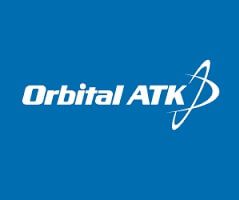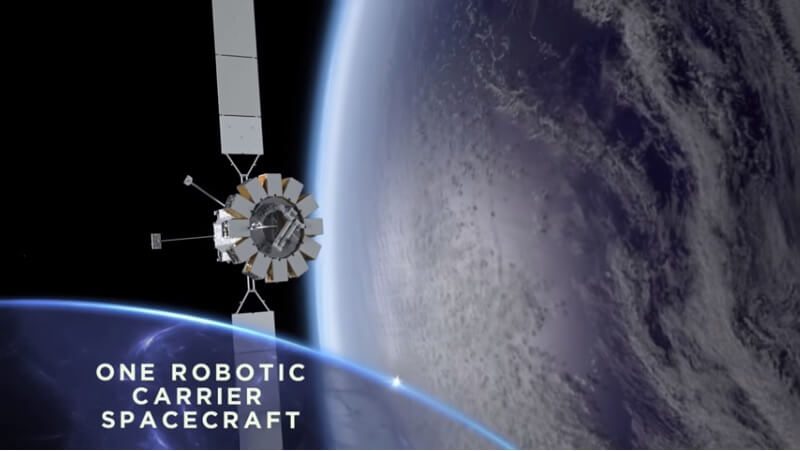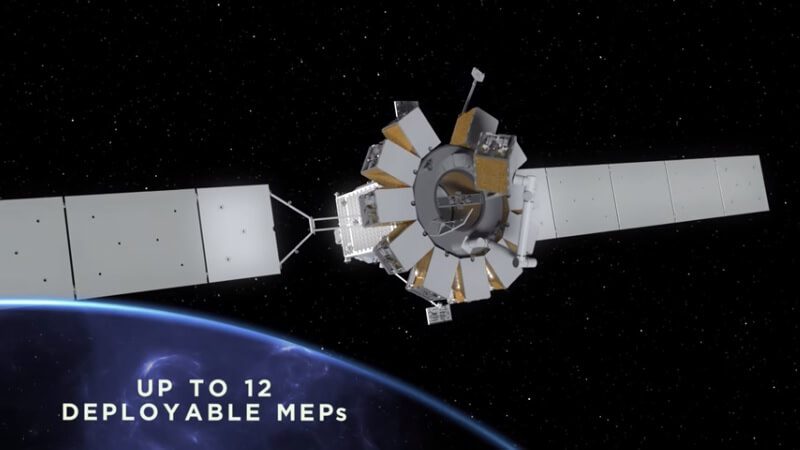At the “Reuse, Revitalize and Repurpose” forum at the SATELLITE 2018 conference, Orbital ATK along with their dedicated, in-orbit servicing subsidiary SpaceLogistics, introduced the new members of their Mission Extension family. These new entrants consist of; the small MEP (Mission Extension Pod) and the mothership-like MRV (Mission Robotic Vehicle) which will carry the MEPs.

Corporate logo of Orbital ATK.
The MRV has been formed from the union of the current MEV and Orbital ATK’s ESPAStar – an in-orbit payload transportation system originally designed to be installed on any of the EELV launch vehicles (Atlas V, Delta IV and Falcon 9) utilised by the US Government. The MRV is also equipped with a robotic arm, which initially will be used to install the MEPs but has the potential for numerous future robotic applications.

Computer generated image of the MRV spacecraft with 12 MEPs attached. Courtesy of Orbital ATK
The MEPs will only have limited functionality due to their small size. While the units will be able to provide orbital control (orbit raising and North-South stationkeeping) functions for the target spacecraft, their size prevents them from fulfilling a full attitude control role, requiring the target satellite to still be able to perform this function. The MEPs will utilise electric propulsion for their orbit control, and are able to be removed by an MRV and relocated to another target spacecraft. The MEPs are baselined to provide five years of life extension for a target spacecraft with mass circa 2000 kg.
The MEPs will interface with the targets LAE (Liquid Apogee Engine), like their predecessor the MEV.

A Computer image showing how the MEPs will be manipulated by the host MRV. Courtesy of Orbital ATK







